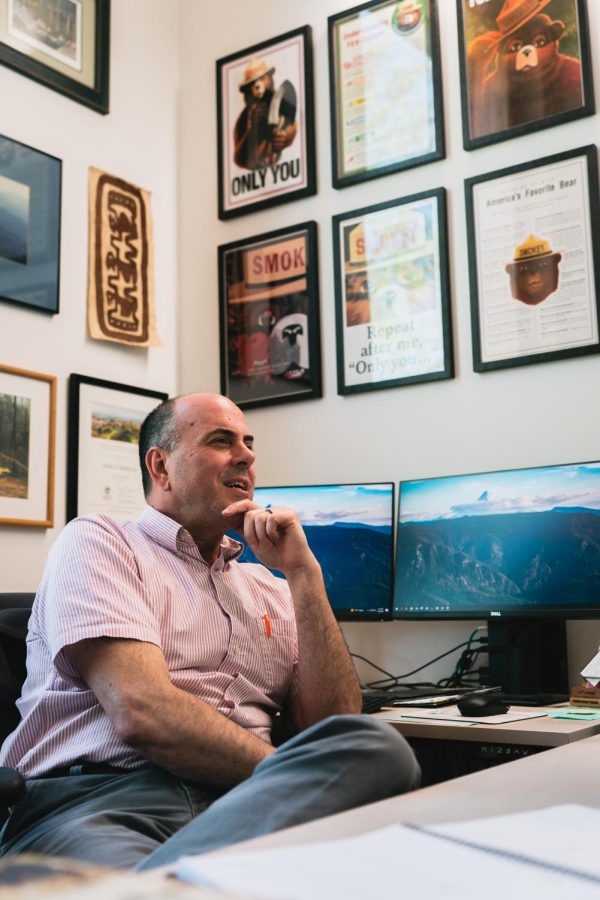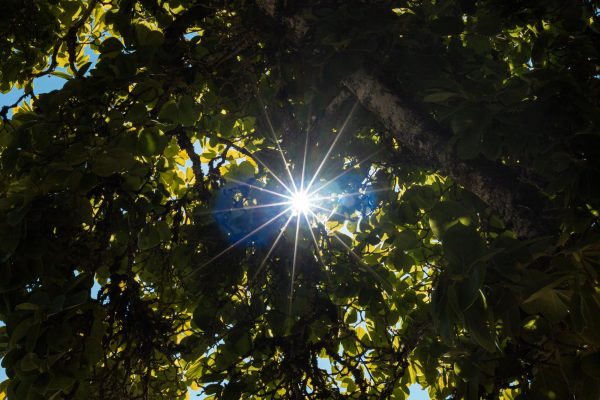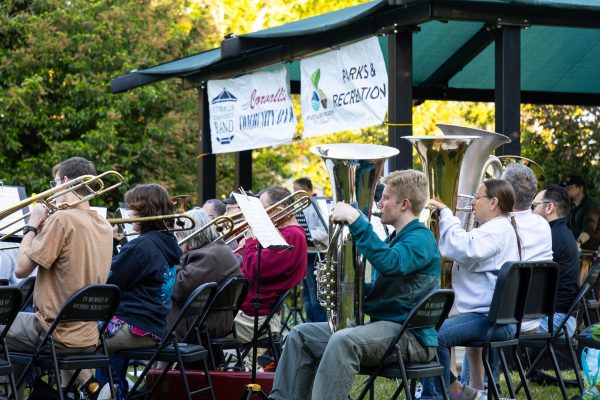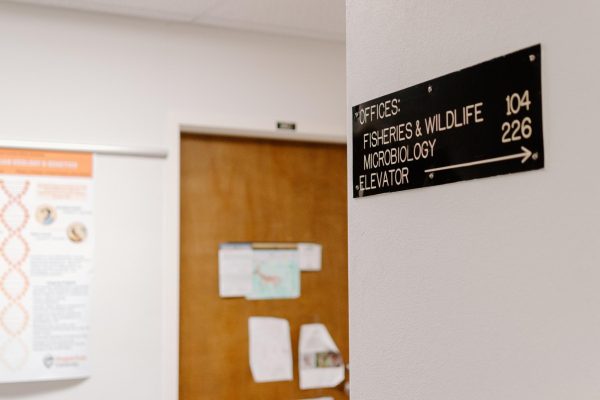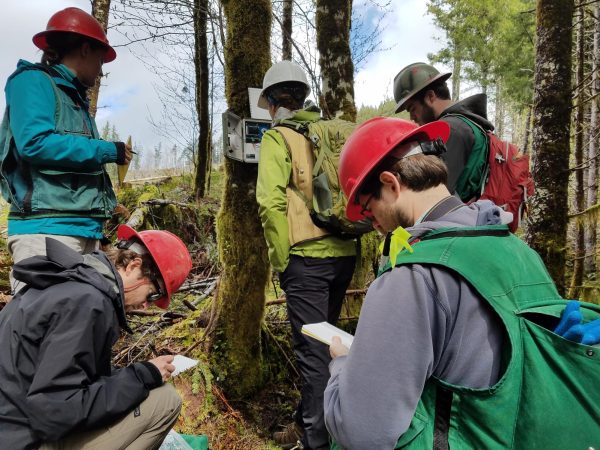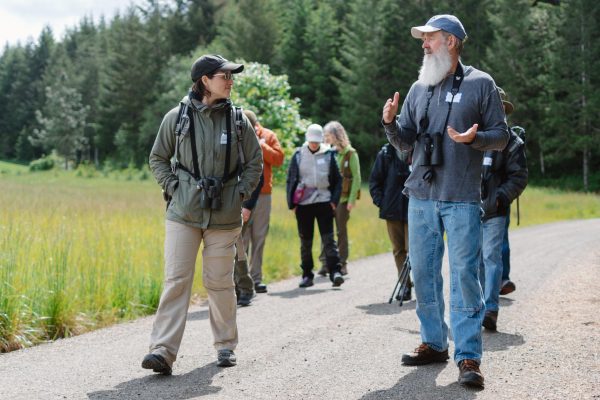Hotter fire seasons are coming – who’s preparing?
Professor John Bailey is interviewed in his office on April 28 in Corvallis. Bailey teaches multiple courses on wildfire science and management.
May 30, 2023
As Oregon’s fire season approaches, organizations and individuals are working to prepare against high levels of fuel and hotter temperatures from climate change.
According to John Bailey, professor of silviculture and wildfire management, the Pacific Northwest has been facing a warmer climate from climate change, causing fire seasons to lengthen and fuels, which includes plant matter and other flammable material, to be drier.
Bailey added that Corvallis faces a particular challenge in its location at the edge of the Willamette Valley, where it is particularly hotter and drier than areas of higher elevation, causing the fire season to start earlier closer to town.
The last 100 years of fire suppression in land management practices have also built up large amounts of fuel on the landscape, according to Bailey.
“We have a lot more fuel on the land than we’ve ever had, actually, since the last glaciation,” Bailey said. “Prior to … colonial settlement of this part of the world, the fuel levels were much lower; fire was a common land management tool.”
The fuel, Bailey said, will eventually end up burning or decomposing. Most of the time, it burns.
Along with an increase of human ignitions, Bailey attributes these factors to the increasing number of acres and homes being burned every year, the number of evacuations, and more.
For Bailey, a good starting point to mitigate fuel levels is general land management, from cutting trees for industrial use to prescribed and controlled burns.
“We just need to do more of it,” Bailey said. “Some of [the fuel] can be toilet paper, and then some of it can be burned for energy… some of it can just be piled on the hillsides because it’s just too expensive to take it somewhere.”
Prescribed burns are more manageable than wildfires in terms of the material that is burned, the amount of heat and smoke that is produced, and how fast the fire will spread. According to Bailey, while there are great tools and science to model a prescribed burn, there’s still a degree of uncertainty.
Unlike burns where the fire is contained in a pile or a similar controlled environment, prescribed burns, such as one on a hillside, sometimes escape containment, but Bailey assures that the risk is less than 2%.
“To not risk a prescribed burn, … is the decision to leave it all there until we have a 50 mile an hour east wind event and somebody’s barbecue blows over and spreads a fire on [an] entire hillside and burns a 100 houses,” Bailey said.
According to Oregon Department of Forestry Public Affairs Officer Jessica Prakke, the ODF sends out firefighters to perform prescribed burns, ecological thinning, dig fire lines, and other methods to suppress and prevent wildfires.
When a fire breaks out, the ODF’s goal is to put out all fires before they get over 10 acres.
In addition to wildfire prevention and suppression, Prakke mentioned that the ODF works to educate Oregonians on wildfire prevention.
“Over 70% of wildfires are human-caused, so the less of those fires we have the more resources we have to allocate,” Prakke said.
Oregon State University’s Extension Fire Program is working to get communities around the state prepared for wildfires and to support landscape resiliency and restoration projects, according to Carrie Berger, manager of the Forestry and Natural Resources Extension Fire Program.
With their partners, the team of specialists in the Fire Program have worked towards fire preparedness, outreach, and education in their respective geographical areas. Among these include the John Day Basin Landscape Resiliency Project that has acquired over $10 million in grant funding, according to the Fire Program’s 2022 Impact Report.
“Our work towards fire adapted communities and landscape resilience is done throughout the year,” Berger said. “All in (preparation) of the fire season, and through the fire season, we’re constantly working on these things.”
Among their other efforts, the program has also developed a webinar series touching every county in Oregon on home hardening, fire ecology, and more. Berger states that the series has been “hugely successful,” with over 10,000 views.
More information can be found on the Fire Program’s website and their 2022 Impact Report.
Students and community members can get involved by engaging with the opportunities that the Fire Program provides to be prepared for topics such as evacuation. Berger also encourages students to explore other extension programs for areas beyond fire preparedness.
Prakke encourages community members to work towards turning local communities into a Firewise USA community, which is a program that helps communities in wildfire preparedness efforts, as well as visiting the Keep Oregon Green website.
According to Bailey, even though not every year is a bad year, the general trajectory is that fire seasons are getting longer and more dangerous. To match that challenge, a four-fold increase in proactive fuels management is needed.
“We’re not even approaching this the right way, to get out in front of this,” Bailey said. “All of that systemic change would help with this issue.”
Berger hopes that, with continued collective work to chip away at the wildfire issue, the land will be more able to withstand intense fires.
“At times, it seems overwhelming, but I’m really optimistic because I know our communities are coming together, and our leaders are investing money in landscape resiliency,” Berger said.
Prakke also believes that the ODF and other fire organizations are prepared for this challenge, even though it’s difficult to predict what future fire seasons will be like.
“The fire seasons have been intensifying annually since roughly 2013, and we recognize that that is the new normal for fire and are prepared to adapt with the changing climate,” Prakke said.












































































































